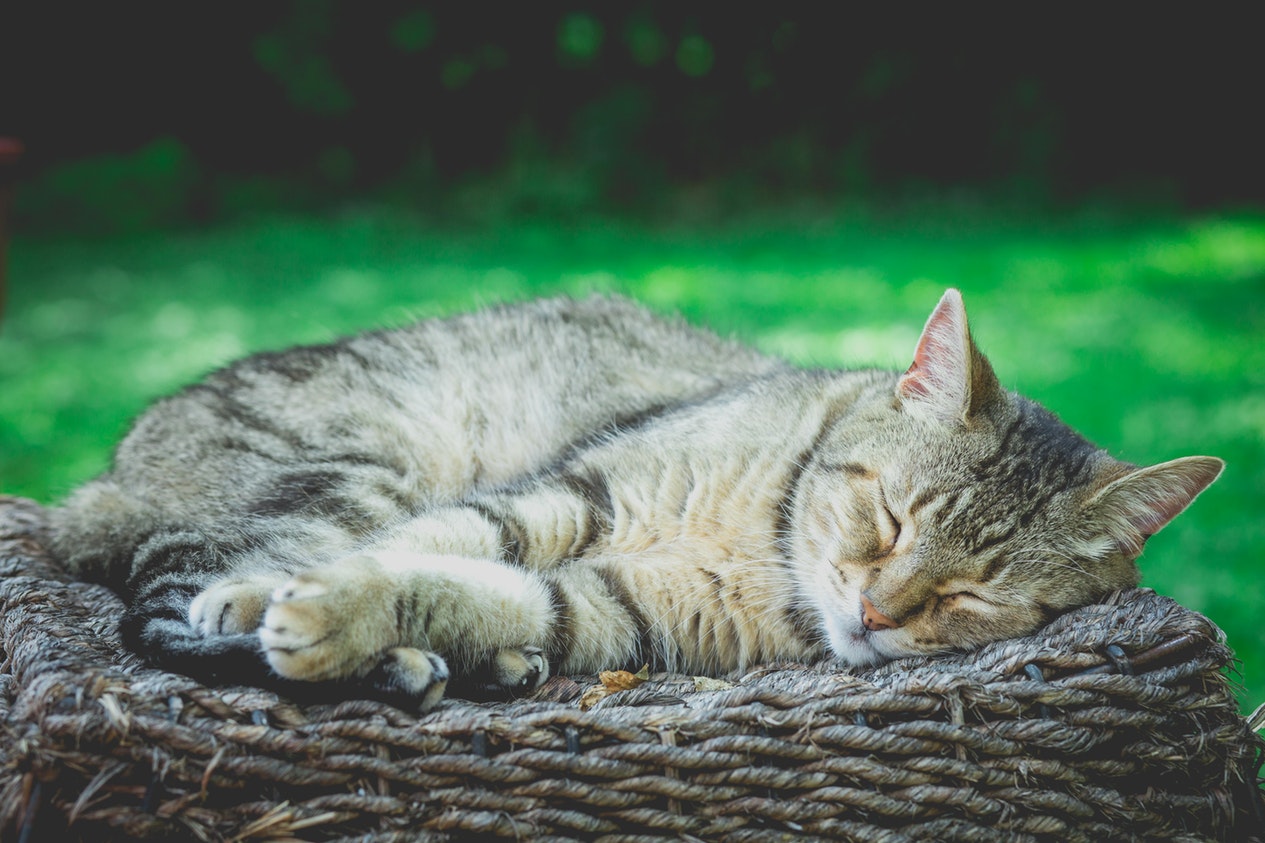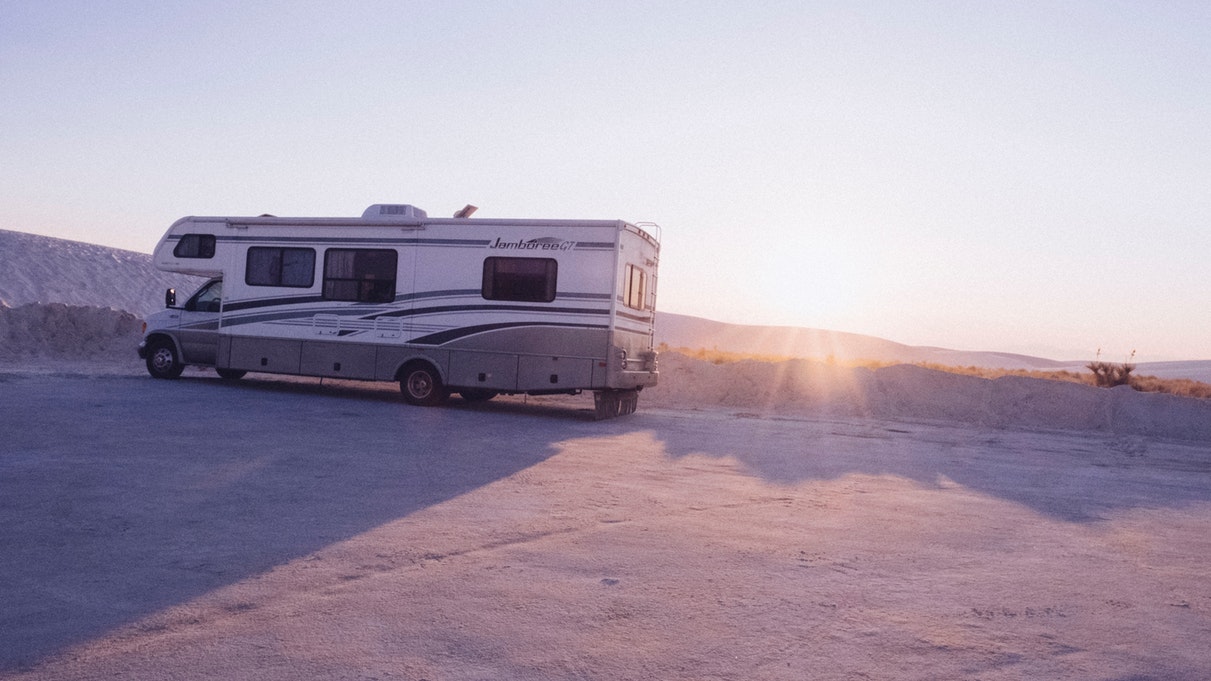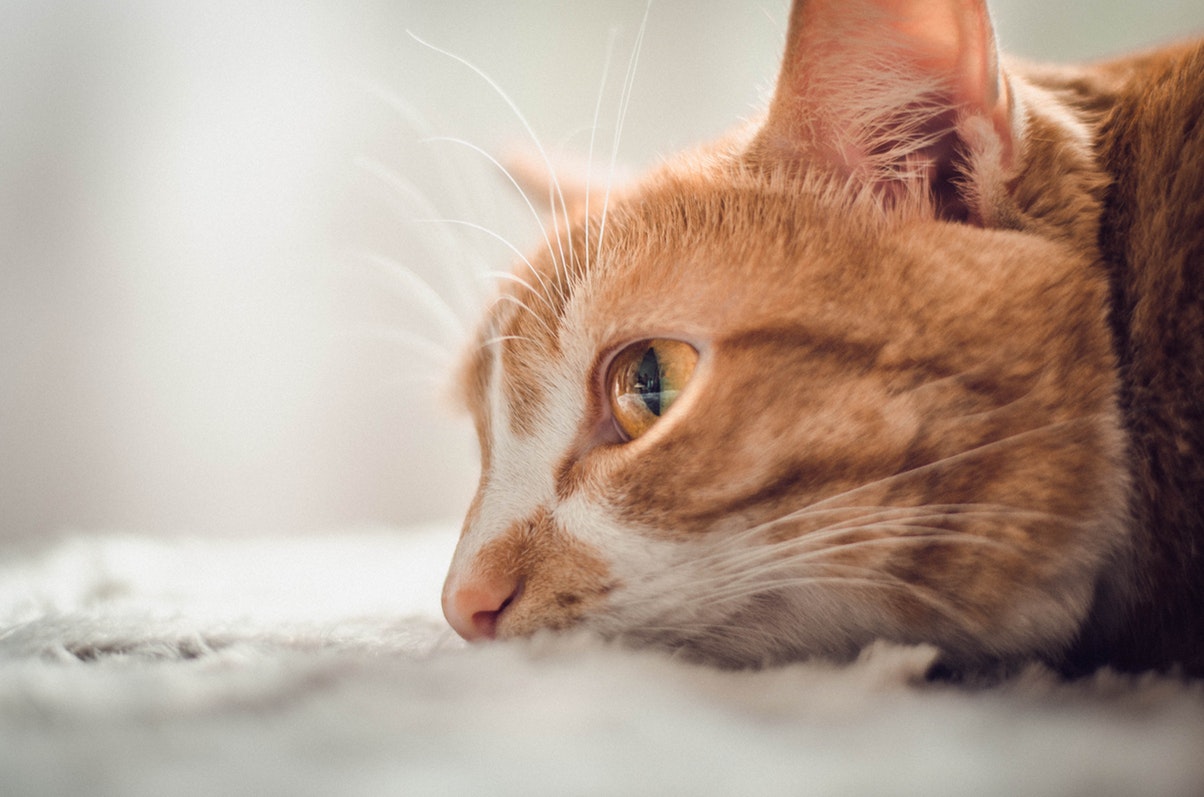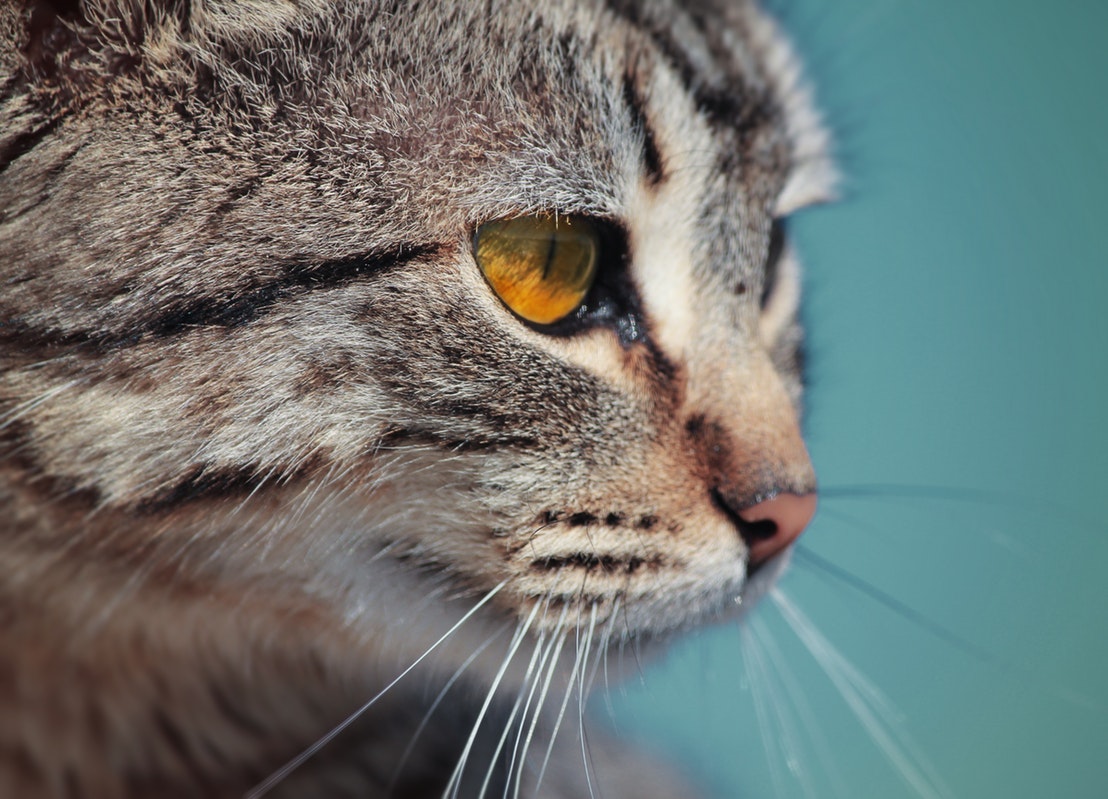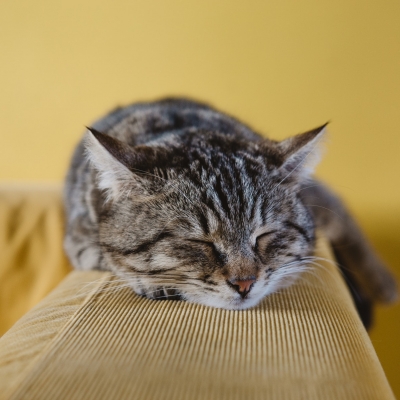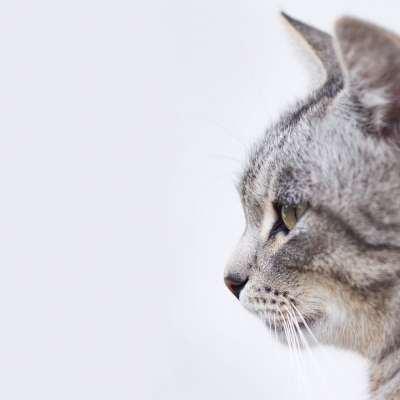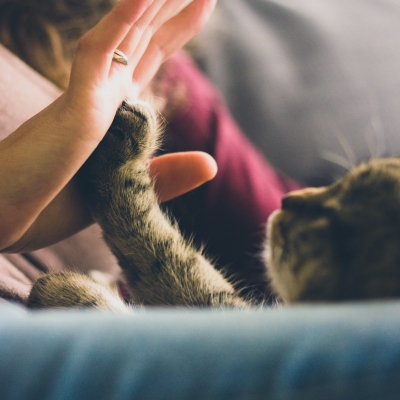Flying with a Cat
You are allowed a personal bag and 1 carryon. A cat's crate is the carryon, and instead of a purse, use a backpack with your purse in it. Traveling with a pet is much like traveling with a baby.
Try to be prepared for any emergency. This can be tricky when you have a limited amount of space so you will need to be creative. If your pet has a small comfort toy, put it in the crate with them to help reassure them that everything is fine.
Have a copy of his shot record with you, along with his health cert even if you don't think that this is requred. You do not want to be left stranded without the documents for your beloved pet. And you should know, that if you travel anything and everything can go wrong. Keep the document safe.
If you have flown before you know that planes are pretty cold places. Make sure that you bring along a small blanket that your beloved pet can snuggle up in to keep them warm.
A Must
You'll need to take a a short leash and collar. The small cat harnesses are better, but you will have the problem of getting them in and out of it. So while I am all for the harness, if your cat cannot comfortably wear it you should skip it in favor of the collar which they should be accustomed to.
I say all of this because you will need to take them out of their crate when you go through security, mke sure that they are restrained at all times. I have experienced TSA who insist that pets should be out as soon as you step into line. Then other times the TSA instructed me to wait until the last minute. Be prepared for both and do no make assumptions, let them instruct you, or ask for instructions.
If you have to wait on a lay over you should find a quiet corner to relax in, your cat is stressed and a little togther time will be good for you both. I will say that most employees won't mind them being out of their crate, just so long as they are on a leash and in your lap.
Bathroom Break!
You will need to pick up the water an hour or so before you go so that you pet has a chance to drink and purge, yet will not be thirsty when you are on the flight. This is a part of the trip that can become an ordeal so you will need to try and do your best. Unfortunately, since you have to start somewhere, experience can only be made once you have done it. And a lot can go wrong here.
But ensure that you give them plenty of chances to drink. You should also make sure that you have plenty to drink before boarding. This will give you both time for a last bathroom trip.
If the trip is short you should be in good shape. But if you are going cross country you might need to look at other options. The options you have available to you really depends on how long the trip will be. And I should note, that it also has to do with the temp. If you have a layover you have your pet may need more water during the wait. And this will unfortunately lead to...
Diapers
Diapers. Ugh. We wanted to avoid this right?
Seriously all that it will take is a bad landing on the flight and are left with an unusable crate which will be hard to clean and a pet which may be both terrified and in desperate need of a bath.
This is why I make sure to carry a tiny 3oz bottle of shampoo and a hand towel.
I would also pack a small package of baby wipes. I have found them an important part of traveling with pets, even if it isn't in a plane. You will quickly see why they work wonders in a variety of situations when it comes time to clean up accidents.
I will also mention that you will also want to pack a change of clothes. I assume you don't want to travel the last leg of your trip in soild clothes. I for one don't.
Given the cramped conditions on planes neither you or the other guests want yoi traveling in dirty clothes!
I wish you and your beloved pet the best of luck in your journey.
I think that it is really ireesponsilbe to let a cat "roam free" and nor do I buy the argument that a cat will come home when it is hungry. A pet is your responsiblity and you need to see it as that. If you owned a dog you wouldn't let it drink from the toilet. I think it's just irresponsible to give into your pet's desires when it jeopardizes their safety.
There are too many dangers outside, and a cat is per definition a pet. And pets are domesticated animals. People will try and argue that they are used to living "outside" in that dangerous environment. But volonteer at a sheltter, take care of sick cats that have been resuced from the streets. They are in bad shape. If they were adpat to living outside this would not be an issue.
And then there are the owners that get upset when something happens. This really perturbs me to no end. Why are they surprised, why do they get mad, and then blame the person in the car who hit their cat? When you let your animal roam freely outside, the blame is not on the person who was driving, it is solely on you, the owner. Cat's do not have a human capacity for understanding traffic, it's just dangerous.
But you are not only jeopardizing the cat's life but that of the wildlife in your area, which is decimated by cat that are left to roam free.
I will honestly end here, for most people this is either logical or falling on deaf ears. It doesn't matter that statistically speaking indoor cats and dogs will outlive their outdoor counterparts by more than a factor of 2. If you really feel that your cat needs to go outside you can aslways train them to walk on a leash, it isn't uncommon, or hard.
It just takes time.
I love to travel, and though I don't do it that frequently, I do have to travel on occasion. I would really love to do it more. But as you know taking a pet with you is really only something that you do when you absolutely have to. Flying with them can be major stress for both of you. And day trips in the car usually means spending most of the time in the crate.
But there are options out there. My husband had been an avid RVer (not sure if that is what you call them or not) and spent a whole summer in college traveling around the country.
He had put up his RV hat though when we got married, but he still talks about it.
So I sat down and started to do some research. And yes, RVing is an option with cats.
We happened to find a couple that does it with their two cats on Youtube. The series is called Gone With The Wynns (here is their blog) and they seem to get along with the situation just fine. I am still skeptical that two cats in an RV, no matter how large is going to be comfortable.
One idea that we have come to about giving everybody their space is to try and use what limited area their is and the fact that everything is more confined. My husband suggested purchasing storage ottomans (the kind you can find cheap on places like Overstock) he suggested cutting a hole in the side so that we could put the litter box inside. Then we will get a second one, doing the same thing, except instead of a little box we would put a bed and a blanket in it so that our cat have a personal safe space that they can use to getaway. And yet being storage ottomans they are both easy to open and get the litter box out or to clean the bedding.
That being said, our cats are not outside cats! They have lived a purely indoor life so far, and yet with the cramped conditions of the camper I think that they might not react well to being kept in the RV full time. Which has led to some sleepless nights. While I agree that cats are extremely adaptable, I think that this is really too much to ask of them. But that is not the part that bothers me, it is the fact that the cats could get lost or they could be attacked or kill by the different wildlife that they may encounter. Let alone letting them kill the local wildlife, this all seems problematic and is where my real dilemma hangs.
So that means that we would have to keep them on the leash at all times. This makes going in and out more of a hassle, but I am fine with it.
My hope is that; it is in a cat's nature to love confined areas, thus I hope that she will love the RV.
No matter how much your think you will be traveling, getting your pet used to their carrier is a must!
I made the mistake of letting this slip with our first cat. She was an adorable soft ball of fluff until you tried to put her in a carrier. That is when the claws came out.
Lesson learned?
Start getting your cats used to being in a carrier as soon as possible. When we looked there wasn't really that much info and so we ended up using information that we had found for small dogs. And that is what we built up from. Honestly, I think that what it comes down to is paying attention to the animals needs. Don't lock them in the trunk for ten hours. Make regular stops, give them a chance to drink and use the littler box. Now there is a lot more info out there. For one you can look into crate training, there are places out there with some thoughful instructions.
Make regular stops, but make sure that you keep your pets in the carrier during drive time. Letting them roam the cabin while you drive is just a recipe for disater, and you are putting your pet and your own life in risk, not to mention anyone else that may be envolved in an accident. Never open the car door unless the cat is secured in his carrier or they are on a leash.
For this to work leash training is important.
Don't be surprised if he just doesn't want to use the litter box at all. Cats are finicky about eating and toileting and when stressed will often not do either.
But, as any cat owner should know, cat canot go with out drinkig (most choose to get their fluid from their food).
Yet, even though it is not good for them to refuse eating, refuse a chance to use the litter box, many will. Traveling for a cat, as it is for some of us, is a very stressful experience. Don't be surprised when they act stressed out and elect to hold it. Some people elect to use a covered litter box, the leave it in the backseat. Whenever they stop they offer their pet a chance to use it, as well as water. Another option that you may opt for is to place a puppy pad in the carrier, if you are worried that there could be an accident this is the best option..
As far as forcing their cats to drink. But unless you have tried this, pouring a cap full of water in your cat's mouth is probably not a viable soluton and it will just give your cat more reason to feel stressed.
A better solution would be to use a carrier attachment that allows you to offer them a source of water and maybe just a little bit of food.
Good luck.
We got our girl when she was just about ready to turn 8 years old. During those years she had been a breeder cat and had seen many litters throughout her life. This took a little toll on her, she isn't as clingy as some other cats we have had, but we wanted to adopt her and give her a nice retirement home.
You can see that she has had a lot of expereince with kittens, and cat in general. Since she started to mother our 3 year old male, a blue point mitted. What she does is that she constantly tries to clean him. Which would be fine if that is what he wanted, but most of the time he tries to get away until he has had enough, which ends up in fights. If she could take a hint it would be fine, but she tries so hard that he has little other option.
It isn't a all out fight though, more that he feels like teen that is trying to get his space more than anything.
But cats are very adaptable. And the stress level has dropped way down since we first brought her home. I think that as long as they get enough attention from us and have things to play with they do much better. But when we leave them, it has to be with a sitter, or a cattry.
One thing that we noticed right away is that she seems to have been starved for attention, she literally follows us everywhere and will not leave our side once "we" get out of bed. She sleeps in between us. But the same goes for her proxy baby, he sleeps on the foot of the bed. Both of them are absolutely adorable, and though it sounds hard, they are the best cats that I have ever had the pleasure of caring for.
HCM is a genetic disorder and it is the most common heart disease in domestic cats. Either your cat has it or it does not which is why testing is so important. The only way to find out if your kitty is free from this potentially fatel disease is to have a genetic test done, which costs quite a bit.
Certain breeds are more at risk than others. A friend of mine has two Ragdolls and both of them have been tested positive for HCM. The male is rather healthy, but the female is not doing that good. A healthy Ragdoll can live to be 15-20 years old, one with HCM can die within the first couple of years.
If your cat tests positve with HCM there is not much you can do about it.
A lot of this could be controlled at the breeder level, but the truth is that not all of them test for it. Mainly due to the cost, and/or because they know that the dam and sire have tested positive. You want to make sure you find a respectable breeder, one who is legitimant and wants to sell healthy animals. If they don't test for HCM or aren't TICA and CFA Registered then don't adopt from them.

